-
 Bitcoin
Bitcoin $119000
-2.21% -
 Ethereum
Ethereum $4315
1.01% -
 XRP
XRP $3.151
-3.11% -
 Tether USDt
Tether USDt $0.0000
0.00% -
 BNB
BNB $808.5
-0.71% -
 Solana
Solana $175.8
-4.21% -
 USDC
USDC $0.9999
0.00% -
 Dogecoin
Dogecoin $0.2250
-3.92% -
 TRON
TRON $0.3469
1.77% -
 Cardano
Cardano $0.7818
-3.81% -
 Chainlink
Chainlink $21.47
-2.10% -
 Hyperliquid
Hyperliquid $43.30
-6.81% -
 Stellar
Stellar $0.4370
-2.84% -
 Sui
Sui $3.682
-4.40% -
 Bitcoin Cash
Bitcoin Cash $590.8
2.67% -
 Hedera
Hedera $0.2484
-5.20% -
 Ethena USDe
Ethena USDe $1.001
0.00% -
 Avalanche
Avalanche $23.10
-4.29% -
 Litecoin
Litecoin $119.2
-3.96% -
 Toncoin
Toncoin $3.409
0.90% -
 UNUS SED LEO
UNUS SED LEO $9.016
-1.29% -
 Shiba Inu
Shiba Inu $0.00001304
-3.82% -
 Uniswap
Uniswap $11.18
1.33% -
 Polkadot
Polkadot $3.913
-3.51% -
 Cronos
Cronos $0.1672
-3.08% -
 Dai
Dai $1.000
0.02% -
 Ethena
Ethena $0.7899
-4.70% -
 Bitget Token
Bitget Token $4.400
-1.23% -
 Pepe
Pepe $0.00001132
-5.93% -
 Monero
Monero $257.9
-6.44%
How do I set the auto-lock time in Atomic Wallet?
Atomic Wallet's auto-lock time is controlled by your device's screen timeout settings, which you can adjust for security and convenience.
Mar 28, 2025 at 07:35 am

Understanding Atomic Wallet's Auto-Lock Feature
Atomic Wallet prioritizes security. A key aspect of this is its auto-lock feature, which automatically locks your wallet after a period of inactivity. This prevents unauthorized access to your funds should your device be compromised or left unattended. The auto-lock time is customizable, allowing you to balance security with convenience. Understanding how to adjust this setting is crucial for maintaining the security of your cryptocurrency holdings.
Adjusting Your Auto-Lock Time
Atomic Wallet doesn't offer a direct setting to change the auto-lock time within its settings menu in the way some other applications might. The auto-lock functionality is inherently tied to your device's operating system settings. This means the auto-lock time is controlled primarily by your phone or computer's screen timeout settings. Therefore, modifying your device's settings will indirectly adjust Atomic Wallet's auto-lock behavior.
Modifying Auto-Lock on Different Operating Systems
The process for adjusting screen timeout varies depending on your device's operating system. Here's a general guide:
For Android devices: Navigate to your device's Settings, then search for "Display" or "Screen timeout." You'll find options to set the time before the screen locks. Choose a time that balances security with your usage habits. Remember, shorter time periods offer greater security.
For iOS devices (iPhone/iPad): Go to Settings, then tap on "Display & Brightness." Look for "Auto-Lock" and select your preferred time. Similar to Android, selecting a shorter time is recommended for enhanced security.
For Windows (Desktop): Open the Settings app, go to "System," then "Power & sleep." Here you can adjust the screen timeout under "Screen." Again, a shorter timeout is generally preferable for security.
For macOS (Desktop): Open System Preferences, click on "Desktop & Screen Saver." You can then adjust the "Start screen saver after" setting. This setting dictates when your screen will lock. Choose a shorter time for increased security.
For Linux: The method varies greatly depending on your specific Linux distribution and desktop environment (GNOME, KDE, XFCE, etc.). Consult your distribution's documentation or search online for instructions specific to your setup. The general principle remains the same: find your display settings and adjust the screen timeout. Prioritize a shorter timeout for better security.
Understanding the Implications of Different Auto-Lock Times
Choosing the right auto-lock time is a crucial decision. A very short time, such as 30 seconds, will maximize security but might disrupt your workflow. A longer time, such as 30 minutes, offers greater convenience but increases the risk of unauthorized access if your device is left unattended. Consider your personal security needs and usage patterns when making your selection.
The security of your cryptocurrency is paramount. While Atomic Wallet provides robust security features, relying solely on the wallet's security measures is insufficient. Always remember to practice good security hygiene, such as using strong passwords, enabling two-factor authentication (if available), and keeping your device's operating system and applications updated.
Additional Security Considerations Beyond Auto-Lock
Beyond the auto-lock, consider these additional security measures:
Strong Passphrase: Use a complex and unique passphrase for your Atomic Wallet. Avoid easily guessable information.
Two-Factor Authentication (2FA): If available, enable 2FA for an extra layer of security. This usually involves receiving a code via SMS or an authenticator app.
Regular Software Updates: Keep your Atomic Wallet and operating system updated to benefit from the latest security patches.
Antivirus Software: Use reputable antivirus software on your device to protect against malware.
Secure Device: Use a trusted and secure device to access your Atomic Wallet. Avoid using public computers or unsecured Wi-Fi networks.
Frequently Asked Questions
Q: What happens if I forget my Atomic Wallet passphrase?
A: If you forget your passphrase, unfortunately, you will lose access to your funds. There is no recovery mechanism for forgotten passphrases. This emphasizes the importance of securely storing your passphrase.
Q: Does Atomic Wallet have a built-in auto-lock timer setting?
A: No, Atomic Wallet itself does not have a dedicated setting for adjusting the auto-lock time. It relies on your device's operating system settings for screen timeout.
Q: My auto-lock time keeps changing. Why?
A: This is likely due to changes in your device's power-saving settings or unintentional adjustments to your screen timeout settings. Check your device's settings to ensure the timeout is set as desired.
Q: Is a shorter auto-lock time always better?
A: While a shorter auto-lock time offers greater security, it can also be inconvenient. Find a balance between security and usability that suits your needs. Consider your typical usage patterns.
Q: Can I disable the auto-lock feature entirely?
A: You cannot directly disable the auto-lock feature within Atomic Wallet. However, by setting your device's screen timeout to "Never," you effectively disable the auto-lock functionality, though this is strongly discouraged for security reasons.
Disclaimer:info@kdj.com
The information provided is not trading advice. kdj.com does not assume any responsibility for any investments made based on the information provided in this article. Cryptocurrencies are highly volatile and it is highly recommended that you invest with caution after thorough research!
If you believe that the content used on this website infringes your copyright, please contact us immediately (info@kdj.com) and we will delete it promptly.
- Japan, Bitcoin, and Treasuries: A New Era of Corporate Finance?
- 2025-08-12 18:30:12
- Bitcoin Bull Market: Decoding the Indicators for the Next Big Move
- 2025-08-12 18:30:12
- Do Kwon's Terra Collapse: From 'Not Guilty' to Guilty Plea?
- 2025-08-12 18:50:12
- Material Efficiency, Traceability, and Trust: The New Pillars of Sustainability
- 2025-08-12 18:50:12
- PumpFun (PUMP) Price: Riding the Meme Coin Wave or Facing a Wipeout?
- 2025-08-12 16:50:12
- Uniswap's Legal Clarity Fuels Price Target: Will UNI Hit $12.85?
- 2025-08-12 17:30:13
Related knowledge
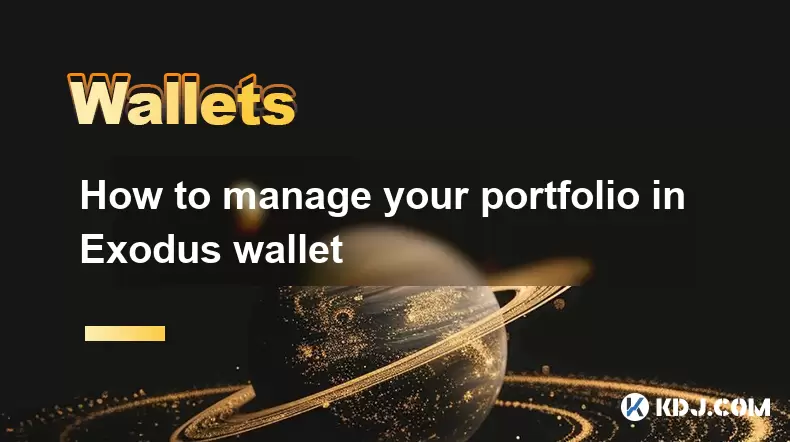
How to manage your portfolio in Exodus wallet
Aug 08,2025 at 10:07pm
Understanding the Exodus Wallet InterfaceThe Exodus wallet is a non-custodial cryptocurrency wallet that supports a wide range of digital assets. When...
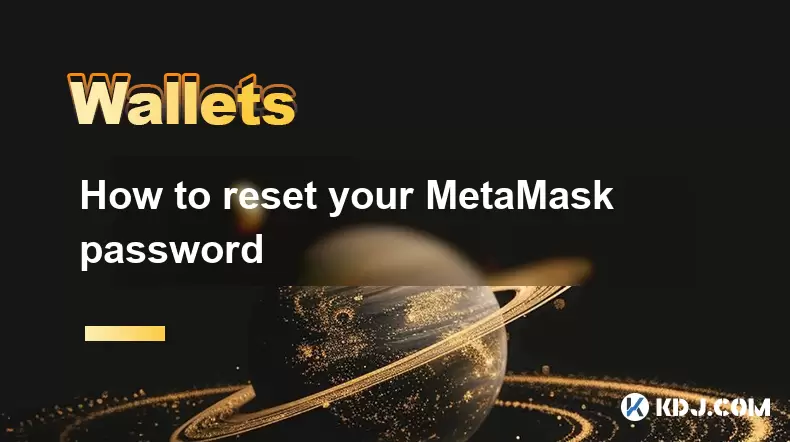
How to reset your MetaMask password
Aug 08,2025 at 01:28pm
Understanding the MetaMask Password Reset ProcessMany users confuse the MetaMask password with the seed phrase or private key, but they serve differen...

How to buy Dogecoin on MetaMask
Aug 08,2025 at 03:42am
Understanding Dogecoin and MetaMask CompatibilityDogecoin (DOGE) is a popular meme-based cryptocurrency that operates on its own blockchain, originall...
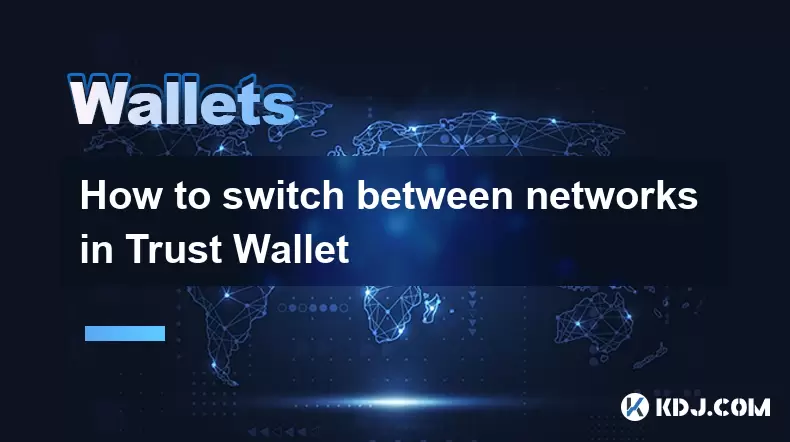
How to switch between networks in Trust Wallet
Aug 09,2025 at 11:07am
Understanding Network Switching in Trust WalletSwitching between networks in Trust Wallet allows users to manage assets across different blockchains, ...
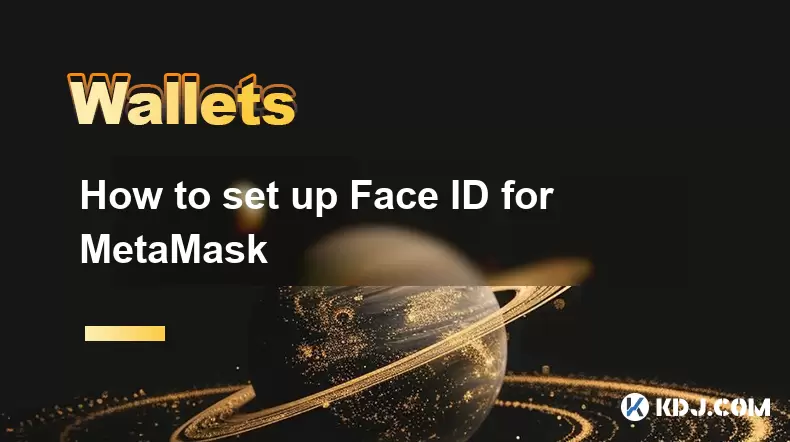
How to set up Face ID for MetaMask
Aug 12,2025 at 02:42am
Understanding Face ID and Its Role in MetaMask SecurityMetaMask is a widely used cryptocurrency wallet that allows users to interact with the Ethereum...
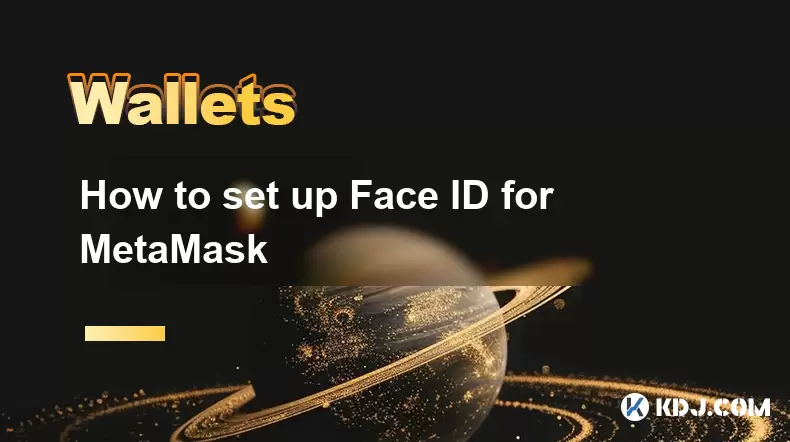
How to set up Face ID for MetaMask
Aug 11,2025 at 09:28am
Understanding Face ID and Its Role in MetaMask SecurityFace ID is a biometric authentication system developed by Apple that uses facial recognition to...

How to manage your portfolio in Exodus wallet
Aug 08,2025 at 10:07pm
Understanding the Exodus Wallet InterfaceThe Exodus wallet is a non-custodial cryptocurrency wallet that supports a wide range of digital assets. When...

How to reset your MetaMask password
Aug 08,2025 at 01:28pm
Understanding the MetaMask Password Reset ProcessMany users confuse the MetaMask password with the seed phrase or private key, but they serve differen...

How to buy Dogecoin on MetaMask
Aug 08,2025 at 03:42am
Understanding Dogecoin and MetaMask CompatibilityDogecoin (DOGE) is a popular meme-based cryptocurrency that operates on its own blockchain, originall...

How to switch between networks in Trust Wallet
Aug 09,2025 at 11:07am
Understanding Network Switching in Trust WalletSwitching between networks in Trust Wallet allows users to manage assets across different blockchains, ...

How to set up Face ID for MetaMask
Aug 12,2025 at 02:42am
Understanding Face ID and Its Role in MetaMask SecurityMetaMask is a widely used cryptocurrency wallet that allows users to interact with the Ethereum...

How to set up Face ID for MetaMask
Aug 11,2025 at 09:28am
Understanding Face ID and Its Role in MetaMask SecurityFace ID is a biometric authentication system developed by Apple that uses facial recognition to...
See all articles

























































































